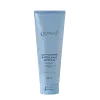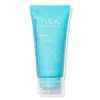What's inside
What's inside
 Key Ingredients
Key Ingredients

 Benefits
Benefits

 Concerns
Concerns

 Ingredients Side-by-side
Ingredients Side-by-side

Water
Skin ConditioningHelianthus Annuus Seed Oil
EmollientGlyceryl Stearate
EmollientCetearyl Alcohol
EmollientGlycerin
HumectantGlycolic Acid
BufferingSalicylic Acid
MaskingSimmondsia Chinensis Seed Oil
EmollientAllantoin
Skin ConditioningFoeniculum Vulgare Oil
EmollientRosmarinus Officinalis Leaf Extract
AntimicrobialZinc Oxide
Cosmetic ColorantCetearyl Glucoside
EmulsifyingXanthan Gum
EmulsifyingLavandula Angustifolia Extract
Skin ConditioningVitis Vinifera Seed Oil
EmollientLactic Acid
BufferingTocopherol
AntioxidantPotassium Sorbate
PreservativePanax Ginseng Root
EmollientAnthemis Nobilis Flower Extract
MaskingCaprylic Acid
CleansingGlycine
BufferingCeteareth-20
CleansingPapain
Skin ConditioningLecithin
EmollientPhenoxyethanol
PreservativeMethylisothiazolinone
PreservativeImidazolidinyl Urea
PreservativeWater, Helianthus Annuus Seed Oil, Glyceryl Stearate, Cetearyl Alcohol, Glycerin, Glycolic Acid, Salicylic Acid, Simmondsia Chinensis Seed Oil, Allantoin, Foeniculum Vulgare Oil, Rosmarinus Officinalis Leaf Extract, Zinc Oxide, Cetearyl Glucoside, Xanthan Gum, Lavandula Angustifolia Extract, Vitis Vinifera Seed Oil, Lactic Acid, Tocopherol, Potassium Sorbate, Panax Ginseng Root, Anthemis Nobilis Flower Extract, Caprylic Acid, Glycine, Ceteareth-20, Papain, Lecithin, Phenoxyethanol, Methylisothiazolinone, Imidazolidinyl Urea
Water
Skin ConditioningGlycerin
HumectantAlpha-Arbutin
AntioxidantPolysorbate 80
EmulsifyingOpuntia Ficus-Indica Fruit Extract
Skin ConditioningAnastatica Hierochuntica Extract
AstringentSodium Acetylated Hyaluronate
HumectantSodium Hyaluronate
HumectantSodium Hyaluronate Crosspolymer
HumectantHydrolyzed Sodium Hyaluronate
Skin ConditioningLactococcus Ferment Lysate
Skin ConditioningLactobacillus
Skin ConditioningLactobacillus Ferment
Skin ConditioningCeramide NP
Skin ConditioningInulin
Skin ConditioningCurcuma Longa Root Extract
MaskingAloe Barbadensis Leaf Juice
Skin ConditioningTetrahexyldecyl Ascorbate
AntioxidantBeta Vulgaris Root Extract
Skin ConditioningAcacia Victoriae Fruit Extract
AntioxidantCitrus Glauca Fruit Extract
HumectantSantalum Acuminatum Fruit Extract
AntioxidantSaccharomyces Cerevisiae Extract
Skin ConditioningSpirulina Platensis Extract
Skin ProtectingButylene Glycol
HumectantPolymnia Sonchifolia Root Juice
Skin ConditioningGlyceryl Dioleate
EmollientPentylene Glycol
Skin ConditioningCarbomer
Emulsion StabilisingPhenoxyethanol
PreservativeSodium Hydroxide
BufferingEthylhexylglycerin
Skin ConditioningSodium Citrate
BufferingMaltodextrin
AbsorbentCaprylyl Glycol
Emollient1,2-Hexanediol
Skin ConditioningHexylene Glycol
EmulsifyingSodium Phytate
Trehalose
HumectantTriolein
Skin ConditioningMica
Cosmetic ColorantAlpha-Glucan Oligosaccharide
CleansingSodium Benzoate
MaskingPotassium Sorbate
PreservativeLactic Acid
BufferingCitric Acid
BufferingSodium Chloride
MaskingTocopherol
AntioxidantCI 77891
Cosmetic ColorantCI 42090
Cosmetic ColorantWater, Glycerin, Alpha-Arbutin, Polysorbate 80, Opuntia Ficus-Indica Fruit Extract, Anastatica Hierochuntica Extract, Sodium Acetylated Hyaluronate, Sodium Hyaluronate, Sodium Hyaluronate Crosspolymer, Hydrolyzed Sodium Hyaluronate, Lactococcus Ferment Lysate, Lactobacillus, Lactobacillus Ferment, Ceramide NP, Inulin, Curcuma Longa Root Extract, Aloe Barbadensis Leaf Juice, Tetrahexyldecyl Ascorbate, Beta Vulgaris Root Extract, Acacia Victoriae Fruit Extract, Citrus Glauca Fruit Extract, Santalum Acuminatum Fruit Extract, Saccharomyces Cerevisiae Extract, Spirulina Platensis Extract, Butylene Glycol, Polymnia Sonchifolia Root Juice, Glyceryl Dioleate, Pentylene Glycol, Carbomer, Phenoxyethanol, Sodium Hydroxide, Ethylhexylglycerin, Sodium Citrate, Maltodextrin, Caprylyl Glycol, 1,2-Hexanediol, Hexylene Glycol, Sodium Phytate, Trehalose, Triolein, Mica, Alpha-Glucan Oligosaccharide, Sodium Benzoate, Potassium Sorbate, Lactic Acid, Citric Acid, Sodium Chloride, Tocopherol, CI 77891, CI 42090
Ingredients Explained
These ingredients are found in both products.
Ingredients higher up in an ingredient list are typically present in a larger amount.
Glycerin is already naturally found in your skin. It helps moisturize and protect your skin.
A study from 2016 found glycerin to be more effective as a humectant than AHAs and hyaluronic acid.
As a humectant, it helps the skin stay hydrated by pulling moisture to your skin. The low molecular weight of glycerin allows it to pull moisture into the deeper layers of your skin.
Hydrated skin improves your skin barrier; Your skin barrier helps protect against irritants and bacteria.
Glycerin has also been found to have antimicrobial and antiviral properties. Due to these properties, glycerin is often used in wound and burn treatments.
In cosmetics, glycerin is usually derived from plants such as soybean or palm. However, it can also be sourced from animals, such as tallow or animal fat.
This ingredient is organic, colorless, odorless, and non-toxic.
Glycerin is the name for this ingredient in American English. British English uses Glycerol/Glycerine.
Learn more about GlycerinLactic Acid is another well-loved alpha hydroxy acid (AHA). It is gentler than glycolic acid but still highly effective.
Its main role is to exfoliate the surface of the skin by loosening the “glue” that holds dead skin cells together. Shedding those old cells leads to smoother, softer, and more even-toned skin.
Because lactic acid molecules are larger than glycolic acid, they don’t penetrate as deeply. This means they’re less likely to sting or irritate, making it a great choice for beginners or those with sensitive skin.
Like glycolic acid, it can:
Lactic acid also acts as a humectant (like hyaluronic acid). It can draw water into the skin to improve hydration and also plays a role in the skin's natural moisturizing factor (NMF) in the form of sodium lactate.
Studies show it can boost ceramide production to strengthen the skin barrier and even help balance the skin’s microbiome.
To get results, choose products with a pH between 3-4.
Lower strengths (5-12%) focus on surface exfoliation; higher strengths (12% and up) can reach deeper in the dermis (deeper, supportive layer) to improve skin texture and firmness over time.
Though it was originally derived from milk, most modern lactic acid used in skincare is vegan. It is made through non-dairy fermentation to create a bio-identical and stable form suitable for all formulations.
When lactic acid shows up near the end of an ingredient list, it usually means the brand added just a tiny amount to adjust the product’s pH.
Legend has it that Cleopatra used to bathe in sour milk to help reduce wrinkles.
Lactic acid is truly a gentle multitasker: it exfoliates, hydrates, strengthens, and brightens. It's a great ingredient for giving your skin a smooth, glowing, and healthy look without the harshness of stronger acids.
Read more about some other popular AHA's here:
Learn more about Lactic AcidPhenoxyethanol is a preservative that has germicide, antimicrobial, and aromatic properties. Studies show that phenoxyethanol can prevent microbial growth. By itself, it has a scent that is similar to that of a rose.
It's often used in formulations along with Caprylyl Glycol to preserve the shelf life of products.
Potassium Sorbate is a preservative used to prevent yeast and mold in products. It is commonly found in both cosmetic and food products.
This ingredient comes from potassium salt derived from sorbic acid. Sorbic acid is a natural antibiotic and effective against fungus.
Both potassium sorbate and sorbic acid can be found in baked goods, cheeses, dried meats, dried fruit, ice cream, pickles, wine, yogurt, and more.
You'll often find this ingredient used with other preservatives.
Learn more about Potassium SorbateTocopherol (also known as Vitamin E) is a common antioxidant used to help protect the skin from free-radicals and strengthen the skin barrier. It's also fat soluble - this means our skin is great at absorbing it.
Vitamin E also helps keep your natural skin lipids healthy. Your lipid skin barrier naturally consists of lipids, ceramides, and fatty acids. Vitamin E offers extra protection for your skin’s lipid barrier, keeping your skin healthy and nourished.
Another benefit is a bit of UV protection. Vitamin E helps reduce the damage caused by UVB rays. (It should not replace your sunscreen). Combining it with Vitamin C can decrease sunburned cells and hyperpigmentation after UV exposure.
You might have noticed Vitamin E + C often paired together. This is because it is great at stabilizing Vitamin C. Using the two together helps increase the effectiveness of both ingredients.
There are often claims that Vitamin E can reduce/prevent scarring, but these claims haven't been confirmed by scientific research.
Learn more about TocopherolWater. It's the most common cosmetic ingredient of all. You'll usually see it at the top of ingredient lists, meaning that it makes up the largest part of the product.
So why is it so popular? Water most often acts as a solvent - this means that it helps dissolve other ingredients into the formulation.
You'll also recognize water as that liquid we all need to stay alive. If you see this, drink a glass of water. Stay hydrated!
Learn more about Water